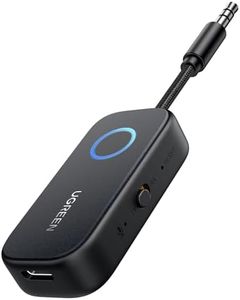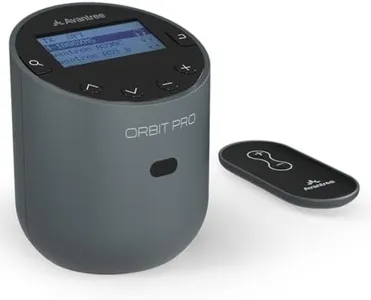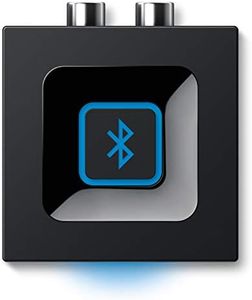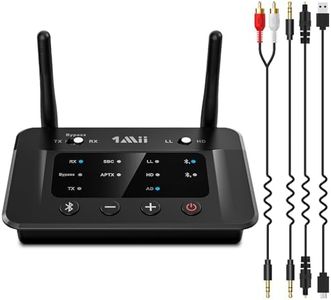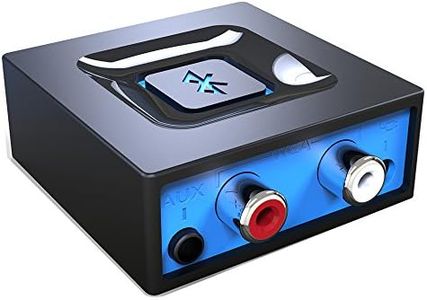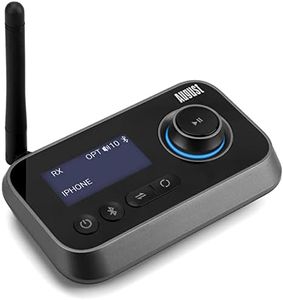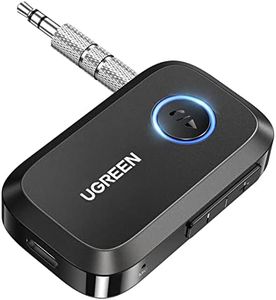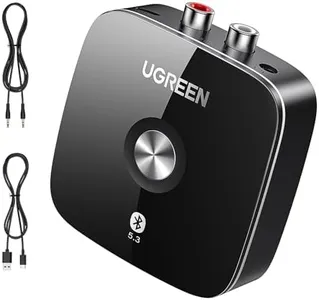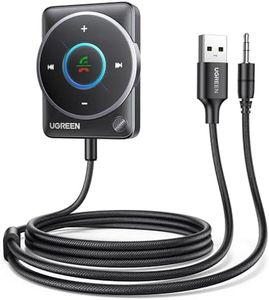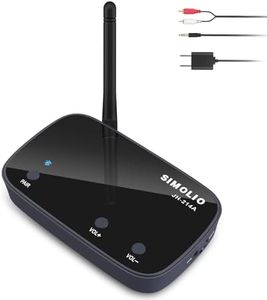We Use CookiesWe use cookies to enhance the security, performance,
functionality and for analytical and promotional activities. By continuing to browse this site you
are agreeing to our privacy policy
10 Best Bluetooth Adapters For Stereo Receivers
From leading brands and best sellers available on the web.Buying Guide for the Best Bluetooth Adapters For Stereo Receivers
Choosing a Bluetooth adapter for your stereo receiver can let you easily stream audio wirelessly from your phone, computer, or other Bluetooth-enabled devices to your traditional audio system. The key is to match the adapter’s capabilities to your needs and your receiver’s connections. Consider where and how you'll use the device, what audio quality you expect, and whether any extra features would make your listening experience more enjoyable or convenient.Bluetooth VersionBluetooth version refers to the generation of Bluetooth technology the adapter uses, which affects connection stability, range, and potential audio quality. Newer versions (such as Bluetooth 5.0 and above) provide better range, faster connections, and can handle more advanced wireless features. Versions below 4.0 might still work but may offer limited range or speed. If you'll only be connecting over short distances in a less crowded wireless space, older versions may be acceptable, but if your setup is modern and you want fewer connection issues, opt for adapters using Bluetooth 5.0 or newer.
Audio Output TypeAudio output type describes how the Bluetooth adapter connects to your stereo receiver, such as RCA cables, 3.5mm AUX, or optical digital (Toslink). Most older receivers use RCA, while some modern ones also support optical or AUX. Match the adapter’s outputs to the available inputs on your receiver. If your stereo is vintage, make sure the adapter offers analog outputs. If you’re hoping for high-quality sound and your receiver supports it, seek optical or other digital outputs.
Audio Codec SupportAudio codecs are formats that determine how sound is transmitted over Bluetooth, affecting both sound quality and delay. Common codecs include SBC, AAC, aptX, and LDAC�—the latter two can offer near-CD quality and lower latency, especially aptX for Android users. If sound quality is critical (for example, for detailed music listening), choose an adapter and source device that both support advanced codecs like aptX or LDAC. If you're mainly listening to podcasts or casual audio, standard codecs may suffice.
RangeRange is the maximum distance you can place your Bluetooth device from the adapter before the connection drops or becomes unreliable. Standard Bluetooth adapters typically cover 10 meters (around 33 feet), while some offer extended range up to 30 meters (100 feet) or more. If you expect to stream music from another room, choose an adapter with longer range; otherwise, for use within the same room, standard range is generally adequate.
Power SourceThe power source specifies how the adapter gets its energy—some plug into a wall outlet, while others draw power from USB ports or include built-in rechargeable batteries. A wall-powered adapter is good for setups that will stay in one place, whereas a USB-powered or battery-powered one is useful if you need portability or want to minimize wires. Think about where the adapter will live and how convenient the power options are for you.
Pairing CapacityPairing capacity is how many devices can be connected to the Bluetooth adapter at one time. Some adapters only allow one active connection, while others let you switch between two devices (dual pairing or multipoint support). If you often share your receiver between household members or switch sources frequently, multipoint support can be a handy feature.
LatencyLatency means the delay between sending audio from your device and hearing it through your speakers. High latency can introduce a noticeable lag, making lip-sync with video or live performances less accurate. If you’ll use the receiver for watching movies or playing games, look for adapters specifying 'low latency' or 'aptX Low Latency' support. For pure music listening, latency is usually not a concern.
